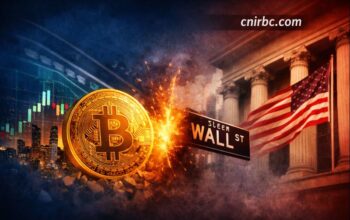A token can be considered a currency if it can be used as a means of exchange or store of value in the market. In the present day, designing a token that can be used as a currency is an almost impossible feat for blockchain contenders. However, SAGA is gearing up to change the dynamics with its new global currency identified as SGA.
According to Ido Sadeh Man, the founder of SAGA, currencies today are slowing down and haven’t picked up with the pace of globalization. Even so, they do not satisfy the needs of modern lives or even meet up with global scope. Thus, societal changes, monetary diversification, and the daily reduction in the economic importance of national boundaries have called for the creation of a global yet non-governmental currency. In order to satisfy the needs of modern lives, SAGA has designed and launched the first-ever stabilized, digital token known as SGA. It is governed by modern global citizens, which complies with Anti-Money Laundering regulations.
Considering a token as a currency depends on several conditions, with the important ones being efficient governance, regulatory oversight and tamed volatility. The new global currency of SAGA’s SGA token has been able to fulfill these conditions and has now been launched.
The SGA is a digital yet stabilized currency that enables global users to save and move value without restrictions across continents. Receiving help from financial institutions, banks, and other regulators, SGA token serves as a bridge that introduces digital currencies into the mainstream, thus encouraging trust and reducing risk. SGA token is the first digital currency whose mechanics is similar to that of central bank national currencies. Even better, SGA applies the mechanics on an international scale.
SAGA adopts the monetary standard of central banking, to proffer solutions for two of the issues facing digital currency today, money laundering and volatility. SAGA resolved these issues with the design of the SGN token, to serve as a stable currency. It supports the currency basket of the Special Drawing Rights (SDR), whose value is based on the Pound sterling, Renminbi, Yen, Euro and U.S dollar.
The Features of SGA
The idea was inspired by effective central-banking models, and the currency features a refined and modern monetary model. It is protected by a large reserve of assets that reflect the SDR of the International Monetary Fund (IMF), a basket of currencies which contains JPY, CNY, GBP, USD and EUR. These assets serve as a stabilizing mechanism, thus reducing volatility.
SGA token ensures that your privacy is kept hidden. It is non-anonymous, although you are required to pass a “Know Your Customer” (KYC) process online to ensure that you comply with the standards of Anti-Money Laundering.
The Building Blocks of SAGA
- Stabilization – The monetary model of SAGA token helps to balance its growth using stabilization tools.
- Transparency – The bank or regulatory body that holds it presents daily reserve attestations.
- Liquidity – This is the ODL, that is, on-demand liquidity. SAGA’s SGA is stored as a liquid asset, thus allowing asset buying and selling straight from the contract every day.
- Expectability – The contract for SGA tokens in circulation determines the prices.
- Interest-bearing – The accrued interest on the SGA token reserve is paid to SGA global holders.
- Compliance – SAGA ensures that the token complies with the regulations of Anti-Money Laundering and also mandates holders to undergo the KYC online process.
- Governance – SAGA designed a framework for SGA holders to hold the power of the currency. SAGA believes that the responsibility of controlling the currency should not be only for the establishment, but also the holders. Establishments exist to serve stakeholders, and in this case, stakeholders do not own the currency. The framework of SAGA’s governance is designed to encourage genuine representation of the holders and to also contribute to the success of the currency.
- Hedging – SGA token allows holders access to tools that were once limited to central banks.
In positioning the SGA Token as a global currency, SAGA designed a robust monetary model along with an effective system of governance. The monetary model of the SGA token ensures that it is a blockchain-based liquidity provider. In other words, the monetary model ensures that the supply of SGA tokens meet up with the market demand, and at the same time, reduce the price fluctuations of the token in the market. The proceeds received from the issuance of new SGA tokens are stored as liquid assets that are similar to the currency standard of SDR, in the reserve of a regulated bank.
Unlike the Libra coin of Facebook, SAGA has no intention of holding coin reserves, and this is a welcome development considering that it helps to avoid controlling the currency. SAGA believes that the responsibility of the establishment is to serve stakeholders, and they do not control currency. The business model of SAGA is based on its second token, the SGN, which is held by the corporation and its investors. The SGN token can be exchanged for the SGA token only at a ratio of 15 times. This is to ensure that the original investors do not get control of SGA.
SAGA’s SGA token was not designed and launched to replace existing monetary systems, but to operate in the global market. Thanks to the global economy today, people are much more familiar with currency volatility. The goal of the SGA token is to serve as value storage; the model does not support the rapid buying and selling of the currency.
Written by E. Jones & Shree Edwards, CNIR Staff



